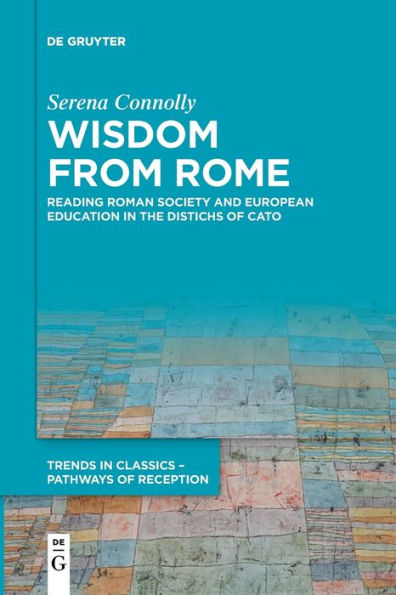For about one thousand years, the Distichs of Cato were the first Latin text of every student across Europe and latterly the New World. Chaucer, Cervantes, and Shakespeare assumed their audiences knew them well—and they almost certainly did. Yet most Classicists today have either never heard of them or mistakenly attribute them to Cato the Elder. The Distichs are a collection of approximately 150 two-line maxims in hexameters that offer instructions about or reflections on topics such as friendship, money, reputation, justice, and self-control. Wisdom from Rome argues that Classicists (and others) should read the Distichs: they provide important insights into the ancient Roman literate masses’ conceptions of society and their views of relationships between the individual, family, community, and state. Newly dated to the first century CE, they are an important addition and often corrective to more familiar contemporary texts that treat the same topics. Moreover, as the field of Classics increasingly acknowledges the intellectual importance of exploring the reception of Classical texts, an introduction to one of the most widely read ancient texts for many centuries is timely and important.
"1141115414"
Wisdom from Rome: Reading Roman Society and European Education in the Distichs of Cato
For about one thousand years, the Distichs of Cato were the first Latin text of every student across Europe and latterly the New World. Chaucer, Cervantes, and Shakespeare assumed their audiences knew them well—and they almost certainly did. Yet most Classicists today have either never heard of them or mistakenly attribute them to Cato the Elder. The Distichs are a collection of approximately 150 two-line maxims in hexameters that offer instructions about or reflections on topics such as friendship, money, reputation, justice, and self-control. Wisdom from Rome argues that Classicists (and others) should read the Distichs: they provide important insights into the ancient Roman literate masses’ conceptions of society and their views of relationships between the individual, family, community, and state. Newly dated to the first century CE, they are an important addition and often corrective to more familiar contemporary texts that treat the same topics. Moreover, as the field of Classics increasingly acknowledges the intellectual importance of exploring the reception of Classical texts, an introduction to one of the most widely read ancient texts for many centuries is timely and important.
21.99
In Stock
5
1

Wisdom from Rome: Reading Roman Society and European Education in the Distichs of Cato
259
Wisdom from Rome: Reading Roman Society and European Education in the Distichs of Cato
259
21.99
In Stock

Product Details
| ISBN-13: | 9783111536392 |
|---|---|
| Publisher: | De Gruyter |
| Publication date: | 06/17/2024 |
| Series: | Trends in Classics - Pathways of Reception , #8 |
| Pages: | 259 |
| Product dimensions: | 6.10(w) x 9.06(h) x (d) |
About the Author
From the B&N Reads Blog
